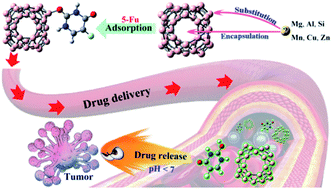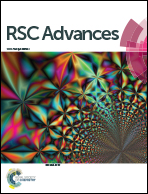DFT study on the adsorption of 5-fluorouracil on B40, B39M, and M@B40 (M = Mg, Al, Si, Mn, Cu, Zn)†
Abstract
Based on density functional theory, the adsorption behavior of 5-fluorouracil (5-Fu) on B40 and its derivatives has been explored. It was observed that 5-Fu prefers to combine with the corner boron atom of the B40 cage via one of its oxygen atoms, forming a strong polar covalent B–O bond. The adsorption energy of 5-Fu on B40 was calculated to be −11.15 kcal mol−1, and thus, it can be duly released from B40 by protonation in the slightly acidic environment of tumor tissue, which makes for reducing the toxic and side effects of this drug. Additionally, the substituent and embedding effect of Mg, Al, Si, Mn, Cu, and Zn atoms on the drug delivery performance of B40 have been also considered. We hope this work could offer some implications for the potential application of boron-based nanomaterials, such as B40 in drug delivery.



 Please wait while we load your content...
Please wait while we load your content...